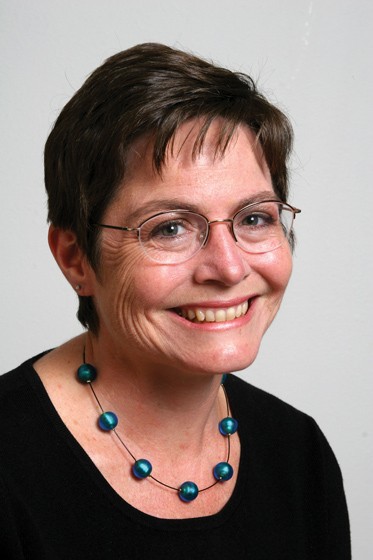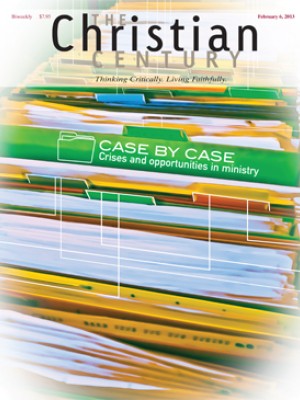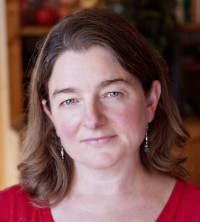Top-down reform: Colleen McDannell on Vatican II

Fifty years ago, Catholic bishops from around the world were taking part in the Second Vatican Council, which from 1962 to 1965 made sweeping changes in Catholic life and practice. In her book The Spirit of Vatican II, Colleen McDannell explores these changes from the perspective not of church doctrine but of her mother, a Catholic woman living in suburban America. McDannell is a professor of history at the University of Utah.
Why did you put your mother at the center of this study?
Because the story of Vatican II has always been about bishops and priests—and men. I thought it would be interesting to put at the center of the story a woman who was not in any way a radical or a liberal and yet found the changes of the council to be important to her own spiritual life.
Read our latest issue or browse back issues.
The changes of Vatican II brought my mother more intimately in contact with the ritual and theological life of her church. Women’s commitment to Catholicism—a commitment that has always had its limits—has been grossly unacknowledged.
How did your mother’s life change as a result of Vatican II?
She became a lector at St. Jude’s parish in Denver. She spent time rehearsing the weekly texts, and that brought her closer to God’s word and sacrament. As she neared her 50th birthday, she was participating in the mass in ways she never would have imagined as a young woman. She saw women distributing communion, organizing music and being paid for work on church committees. She thought: How far we have come.
What was American Catholicism like before the council?
Catholic immigrants had tried to create neighborhoods that resembled European villages. Catholics were not encouraged to associate with non-Catholics, and parishes could be isolated. But that was changing. Because of the war, many Catholic men had been in combat with non-Catholics. American Catholics were moving out into the suburbs, which was dramatically altering parish life. Before the council, there was a lot of growth in church attendance and growth in the number of the people becoming nuns and priests. Catholics were investing enormous resources in a nationwide, parish-based school system. But underlying this growth were some of the same problems that were arising in Europe: the ratio between priests and nuns and people was getting higher, which made it harder to staff growing schools and parishes.
Who was influential in making the changes that we associate with Vatican II—changes in the liturgy, in the use of the vernacular and in the way churches are organized?
It is important to note that the American bishops were not particularly influential at the council. Many of them were men who had spent most of their time building churches and schools and being CEOs.
The church leaders whose native languages were Vietnamese or various African languages were the ones most concerned about whether or not the vernacular would be used in liturgy. It is a pretty big jump to go from a language like Chinese to Latin. Many of those leaders were trying to deal with the effects of colonialism and to make converts in places where Latin was perceived as the language of the colonizers.
The move to the vernacular didn’t refer only to language; it encompassed styles of worship. In the United States we think of Vatican II as introducing things like guitar masses, but for Catholics living in other parts of the world it might have had more to do with sitting on the floor instead of in a pew.
What was the role of women in the council?
Initially, there were no women in attendance. Eventually, over the four sessions, laywomen and Catholic nuns were permitted to be observers. One of the most important documents read at one session was written by the economist Barbara Ward, whose voice was not permitted to be heard in the council. Eventually, Catholic sisters were allowed to attend the council, and they had their own spaces where they were allowed to have a cup of coffee. They called their coffee spot Bar Nun.
Even though the council set the pace for integrating laity into the religious life of the Catholic Church, it never addressed women’s issues directly. The bishops did not discuss birth control or anything having to do with women’s ordination.
What were some of the changes that took place in American churches because of the council?
Some important changes took place in church spaces: the altar was turned around so that the priest would face the congregation. Eventually the liturgy was spoken entirely in English.
Even before the council—though the council often gets blamed for this—bishops had begun changing churches to reflect the aesthetics of modern art. Modern art was revered by the educated elite on the East Coast, and people were aware of new ideas in design. The council gave the green light to make these changes. You can see the same impact of modernism on Protestant churches of the 1950s, 1960s and 1970s. Worship spaces took the shape of circles, or were emptier, or had more severe lines. These ideas came from architects schooled in the most contemporary ideas. This move had more to do with changes in the art world than in the religious world.
How were the changes of Vatican II received in the United States?
The reception was very diverse. Even in one geographic area you could find parishes that made many changes and those that made none. The notion that nuns threw off their habits immediately and started wearing miniskirts is incorrect.
Individual parish priests had a lot of control over the speed at which things changed. If a priest was more attuned to modern art forms or liturgical forms or wanted to use pop music, he could make those changes very quickly. Interestingly enough, the parishioners had no say over it.
One of the long-term effects of the council is that now a priest has to take into consideration a parish council or the wishes of the laity before making changes. When Vatican II’s decisions were initially being enacted, they happened because of the desires of individual parish priests.
You say Vatican II was a “pastoral event.” How did it interact with the lives of laypeople?
The council wanted to say to the laypeople: you have always been a part of the churches—you have raised money for them; you have sent your children to parish schools—but you have never really had a role in the spiritual life of the church. Laypeople, male and female, exercised power in under-the-table ways, but they did not connect directly with the spiritual life of the church. The council encouraged laypeople to be involved by reading scriptures and distributing communion at mass. It encouraged people to take part in Bible study groups or to meet in small prayer groups. To actually sit with other Catholics and reflect on Bible passages and what these Bible stories meant, or to talk about activities in the church and what it might mean for their day-to-day lives—these were all innovations that stimulated a more exciting spiritual life among parishioners.
Did the council have negative effects?
One of the negative effects was that priests who were excited about the new climate initiated changes without bringing their parishioners along. Eventually parish councils formed, and people said, “We have power here, and we don’t actually like the changes you made. We are going to rethink how this church is set up.” There is a certain irony in the fact that the council said, “Laity should be full and active participants,” and yet priests were making top-down changes. They were saying in effect: “You will become full and active participants whether you like it or not.”






